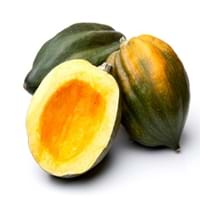Health Benefits
Asthma treatment, Heart care, Prevents constipation, Treatment of skin Diseases
Anti-inflammatory properties, Arthritis treatment, Regulates Blood Sugar
General Benefits
Boosts immune system, Controls blood pressure, Eye care, Helps in weight loss
Boosts immune system, Controls blood sugar levels, Digestive aid
Skin Benefits
Brightens and lightens complexion, Heals sunburn, Reduces wrinkles, Skin rejuvenation, Treatment of acne, Treatment of dark spots, Treatment of skin diseases
Nourishes skin, Protects skin from oxidative stress
Hair Benefits
Prevents hair loss, Promotes longer and healthier hair, Treatment of dandruff
Prevents hair loss, Promotes longer and healthier hair, Regulates hair growth
Allergy Symptoms
Abdominal pains, Anaphylaxis, Breathing difficulty, Itching in tongue and other parts of mouth, Itching sensation in throat, Swelling of mouth, tongue or lips, Vomiting
Asthma, Red rash, Swelling of mouth, tongue or lips
Side Effects
Allergic reaction, Diarrhoea, Skin rash, Possibly unsafe during pregnancy
Diarrhoea, Vomiting
Best Time to Eat
Any time except an hour after meal, Don't consume at night and before bed
Along with meal, As a snack in the late afternoon, Don't eat after meal, Eat the fresh ones, avoid mixing with any other foods, don't eat after meal.
Vitamin B5 (Pantothenic Acid)
Vitamin C (Ascorbic Acid)
Vitamin E (Tocopherole)
Not Available
Vitamin K (Phyllochinone)
Not Available
Lutein+Zeaxanthin
Not Available
Calories in Fresh Fruit with Peel
Calories in Fresh Fruit without Peel
Not Available
Not Available
Calories in Frozen Form
Not Available
Season
Spring, Summer, Winter
Winter
Varieties
Zhong Hua, Jing Li, Ruan Zao, Mao Hua and Huang Yan
Bush Table Queen, Heirloom Table Queen, Festival Hybrid, Early Acorn Hybrid, Table Ace, Ebony and Cream of the Crop
Color
Brown, Green
Dark green, Green-yellow, Orange green
Inside Color
Green
Yellow
Texture
Succulent
Fibrous
Taste
Sour-Sweet, Tangy
Sweetish
Origin
China
Central America, North America, Unknown
Soil Type
Well-drained
Well-drained
Climatic Conditions
Cold, Sunny
Cold, Sunny
Facts about
- The name Kiwi is due to the resemblance with 'Kiwi' bird.
- Animals like monkeys and deer also consume Kiwifruit.
- Originated in china, this fruit is also called as 'Chinese gooseberry.'
- It was named as Acorn Squash for its resemblance to a large ribbed acorn.
- It is said that squash was being grown in Mexico as long as 10,000 years ago.
- It was the first food cultivated by native American Indians.
Other Countries
Chile, France, Greece, Iran, Japan, New Zealand, Portugal, Turkey, United States of America
Egypt, India, Iran, Italy, Mexico, Russia, Turkey, Ukraine, United States of America
Top Importer
United States of America
Costa Rica
Top Exporter
New Zealand
United States of America
Botanical Name
Actinidia deliciosa
Cucurbita Pepo
Synonym
Not Available
Winter Squash
Subkingdom
Tracheobionta
Tracheobionta
Division
Magnoliophyta
Magnoliophyta
Class
Magnoliopsida
Magnoliopsida
Subclass
Dillenhidae
Dillenhidae
Order
Ericales
Cucurbitales
Family
Actinidiaceae
Cucurbitaceae
Genus
Actinidia
Cucurbita
Species
A. deliciosa
Pepo
Generic Group
Kiwi
Not Available
Difference Between Green Kiwi and Acorn squash
We might think that Green Kiwi and Acorn squash are similar with respect to nutritional value and health benefits. But the nutrient content of both fruits is different. Green Kiwi and Acorn squash Facts such as their taste, shape, color, and size are also distinct. The difference between Green Kiwi and Acorn squash is explained here.
The amount of calories in 100 gm of fresh Green Kiwi and Acorn squash with peel is 61.00 kcal and 40.00 kcal and the amount of calories without peel is Not Available and Not Available respectively. Thus, Green Kiwi and Acorn squash belong to Low Calorie Fruits and Low Calorie Fruits category.These fruits might or might not differ with respect to their scientific classification. The order of Green Kiwi and Acorn squash is Ericales and Cucurbitales respectively. Green Kiwi belongs to Actinidiaceae family and Acorn squash belongs to Cucurbitaceae family. Green Kiwi belongs to Actinidia genus of A. deliciosa species and Acorn squash belongs to Cucurbita genus of Pepo species. Beings plants, both fruits belong to Plantae Kingdom.









